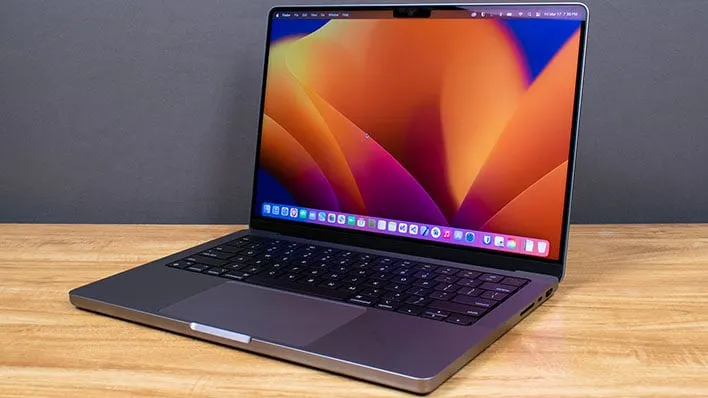Spilling liquid on the screen of your laptop has the capacity to send a wave of panic into anyone’s heart. You look down at your MacBook, and you notice droplets, streaks, or moisture creeping under the glass. You have a “MacBook water screen” issue. Now is the time to act. Immediately turn it off and disconnect the charger if you see water on your MacBook screen, as power and liquid can create a significant risk. Then, remove any USB devices and check for moisture in their hinges and ports. After that, gently blot the screen and allow it to air-dry completely before you power up your device.
Effective Steps to Remove Liquid Residue from MacBook Screen
Here are practical steps to follow after the liquid reaches your MacBook screen. Let’s break it down.
- Power off the MacBook Immediately and Disconnect
The first action: shut down the MacBook immediately if you notice water on or near the screen. Don’t wait. Leaving it powered on increases the risk of a short-circuit. Ensure you press and hold the power button if necessary to force the device to shut down. Then unplug the charger from the wall. Remember: power and liquid don’t mix; it’s a combination to avoid.
- Unplug Any Accessories or USB Devices
Once the MacBook is off, unplug any connected devices: USB drives, external monitors, headphones, and dongles. These are extra “entry points” for moisture and can lead to internal damage through unintended pathways. By doing this early, you reduce the number of surfaces water might reach.
- Identify Where the Water Reached
Now, take a close look at the screen edges, the hinge, ports, and keyboard area. Is there visible moisture under the display or between layers? If yes, the water may already be inside, and you’ll need a more intensive recovery. Water reaching the backlight layer will cause lasting display issues. Understanding how deep the liquid went helps you decide how intensive your drying and inspection needs to be.
- Cleaning the Screen Surface Safely
With external access managed, focus on the screen surface. Grab a soft, lint-free cloth (microfiber is ideal) and gently blot away any visible droplets. Don’t rub hard. Avoid spraying cleaning fluids directly onto the screen, and refrain from pushing moisture into vents or edges. After wiping, open the lid and let the screen air-dry, allowing the remaining residue to evaporate naturally.
- Internal Drying and Drainage
This is where patience pays. Position the MacBook so drainage works in your favor: open the lid to about 90 degrees and set the machine with the keyboard hanging off the edge of a table on a towel. Allow it to remain in this condition for 24-48 hours in a dry, well-ventilated area. Avoid using hair dryers or exposing it to direct sunlight excess heat can warp parts or drive moisture further into the device.
- Inspect and Assess the Damage
Once you’re confident the device is dry enough, power it back on (only if you feel it’s safe to do so). Check for oddities, such as brightness spots, color distortions, fuzzy areas, or ports that no longer recognize devices. Don’t assume everything is fine just because it boots up. Even a tiny watermark behind the screen later led to big headaches.
When to Seek Professional MacBook Repair?
If you spot screen flicker, uneven backlight, lines across the display, battery swelling, overheating, or weird shutdowns, then you’re into professional territory. Once liquid reaches the logic board or the screen assembly internals, you’re likely looking at component replacement or service. Delaying may exacerbate the issue, as corrosion begins to set in.
Preventing Future Water Damage
Here are some preventive measures that you should consider:
- Keep the MacBook Away from Liquids and Damp Environments
Develop a habit: avoid keeping drinks near the MacBook, refrain from using it in or near sinks or wet locations, and never place the MacBook in damp areas. These simple precautions significantly reduce the points of exposure.
- Maintain Clean and Safe Screen Practice
Wipe the screen and keyboard regularly to catch any moisture early. If droplet formation or condensation is observed, switch it off, wipe it with a towel, and dry it. When water intrusion is concealed, a clean machine has lower chances of doing so.
- Use Protective Accessories
When using your MacBook in cafés, kitchens, outdoors, or near water sources, pick your spot with intent. Aim for stable surfaces, avoid placing your device near drinks, and choose a location where liquid won’t easily reach your device if it is knocked over. Keep the lid closed when idle in risky environments.
- Inspect and Maintain Regularly
Conduct a visual inspection of the ports, hinge, edges of the keyboard, and vents by opening the lid every three months to inspect for any signs of moisture, stickiness, or corrosion. Keep recent backups of your data so you don’t lose important information if your device gets damaged.
Conclusion
A “MacBook water screen” issue might feel like you have lost everything, but with calm, prompt action, you can often steer clear of full-blown damage. The process is straightforward: power off, disconnect, clean what you see, and allow the device to dry completely before resuming normal use. Prevention is equally important. By working in dry environments, using protective covers, and remaining vigilant to subtle signs, you can minimize future risks.
It’s not about luck. It’s about knowing what to do when water sneaks in, and acting quickly and sensibly. With care and attention, your MacBook can stay reliable and visually clear even after a minor water mishap.
